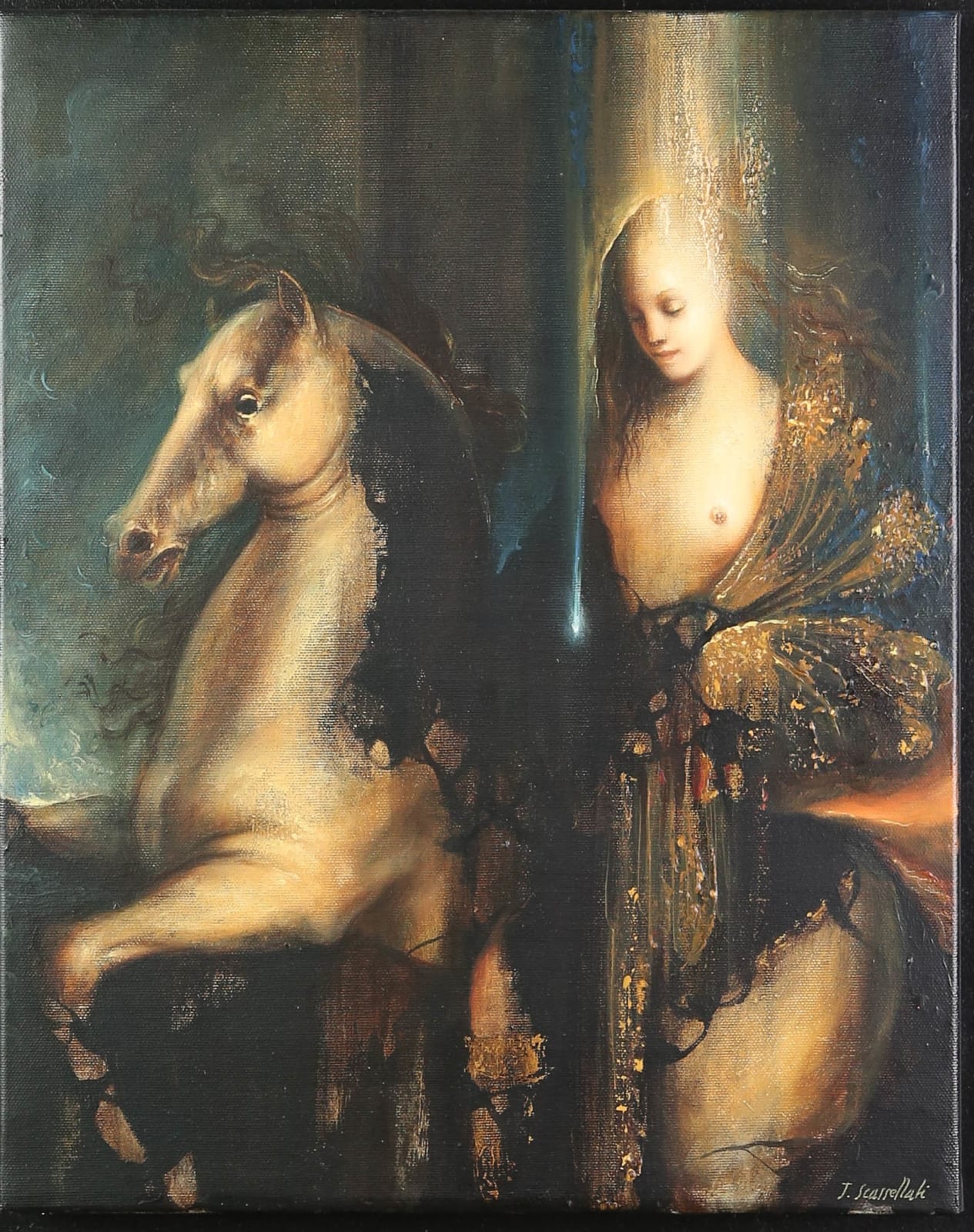
 Frame
Frame
Jacopo SCASSELLATI
19 1/2 x 16 in
In Aetherium, Jacopo Scassellati reaches one of the most distilled expressions of his poetics — a meditation on transcendence, metamorphosis, and the porous boundary between the earthly and the divine.
Two presences inhabit the painting: a horse, muscular and corporeal, and a female figure, serene and luminous, whose upper body seems to dematerialize in a vertical stream of light. The two share neither eye contact nor gesture, yet are bound within a single breath — suspended in what Scassellati himself calls “the interval between flesh and spirit.”
Executed in oil with layered glazes and mineral pigments, the work is characteristic of the artist’s alchemical technique. The surface alternates between opacity and transparency, between the weight of matter and the vibration of light. Gold tones and fractured textures traverse the composition like veins of time, evoking ancient frescoes unearthed from the earth — images not painted but revealed.
The horse, rendered with sculptural gravity, anchors the scene in physical existence. Its taut anatomy and arched neck suggest both vitality and submission, an embodiment of instinct tempered by awareness. Opposite it, the woman’s face is turned inward, her expression one of profound stillness. Light descends upon her like a revelation, elongating her form into the vertical axis that gives the work its name: Aetherium — the realm of pure, incorruptible light in Aristotelian cosmology.
Between these two poles — animal and angelic, matter and essence — Scassellati constructs a metaphysical dialogue. The golden drapery enveloping the figure is at once corporeal and disintegrating, symbolizing transformation — the passage from body to spirit. The beam of light separating the two becomes a visual metaphor for the soul’s ascension, or the artist’s perpetual search for equilibrium between instinct and intellect.
As in many of his works from the late 2010s, Scassellati fuses classical serenity with psychological unease. The horse recalls Leonardo’s equestrian studies and the restrained monumentality of Piero della Francesca, while the woman’s elongated features and inward gaze echo the mysticism of the Symbolists. Yet, despite these art-historical resonances, Aetherium remains unmistakably his own — imbued with the tactile sensuality of clay and the introspection of a painter-philosopher.
Ultimately, Aetherium is less a narrative image than a state of revelation. It visualizes the instant when matter turns luminous — when the finite world of form opens onto the infinite. In Scassellati’s cosmos, this moment of passage is not only sacred; it is the very essence of creation itself.


